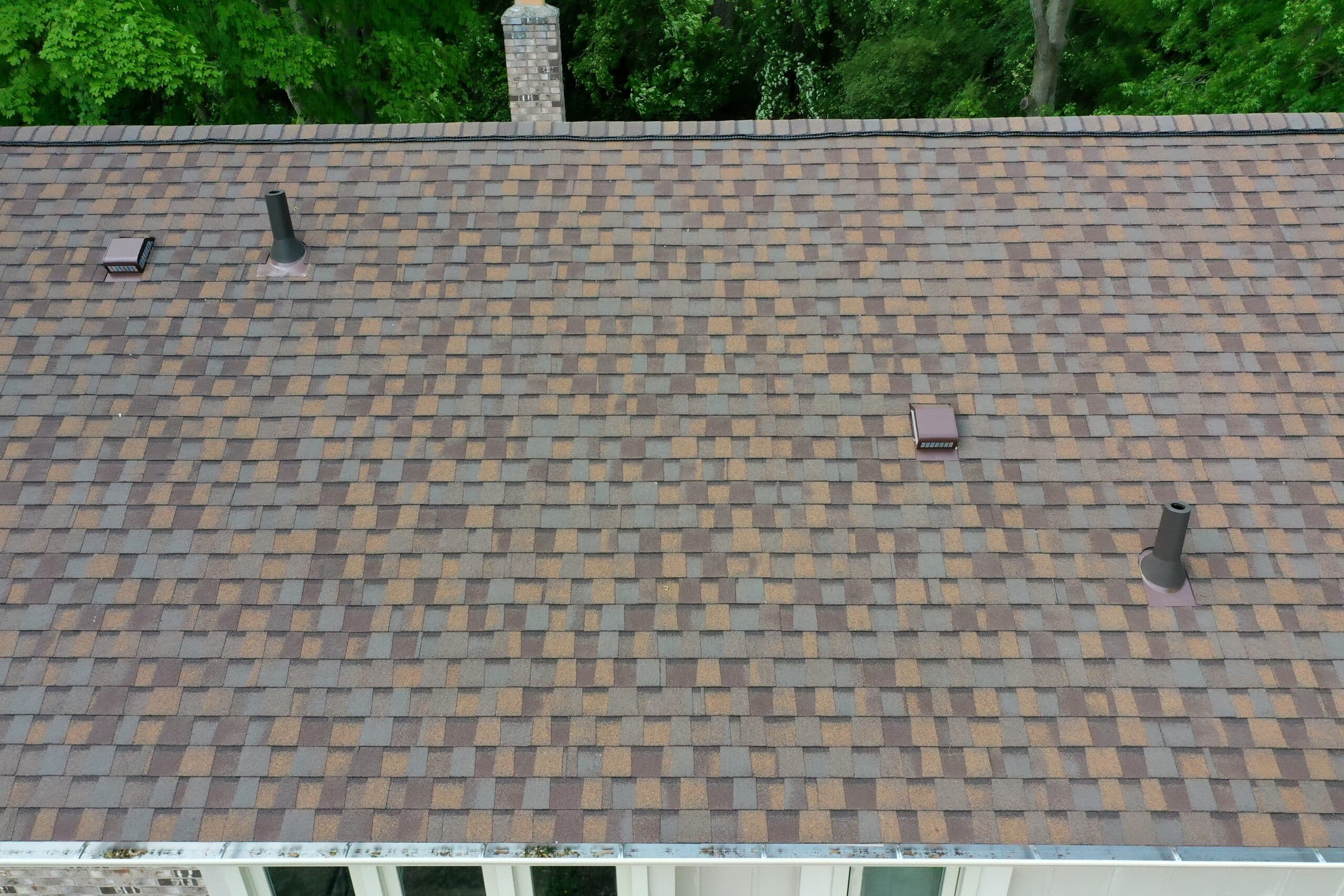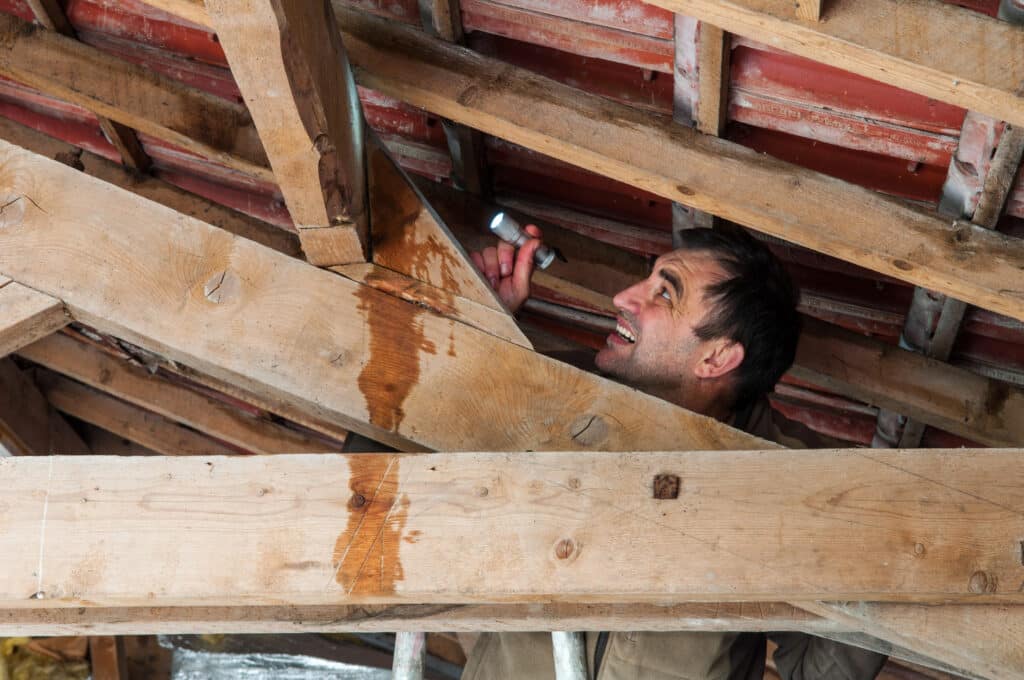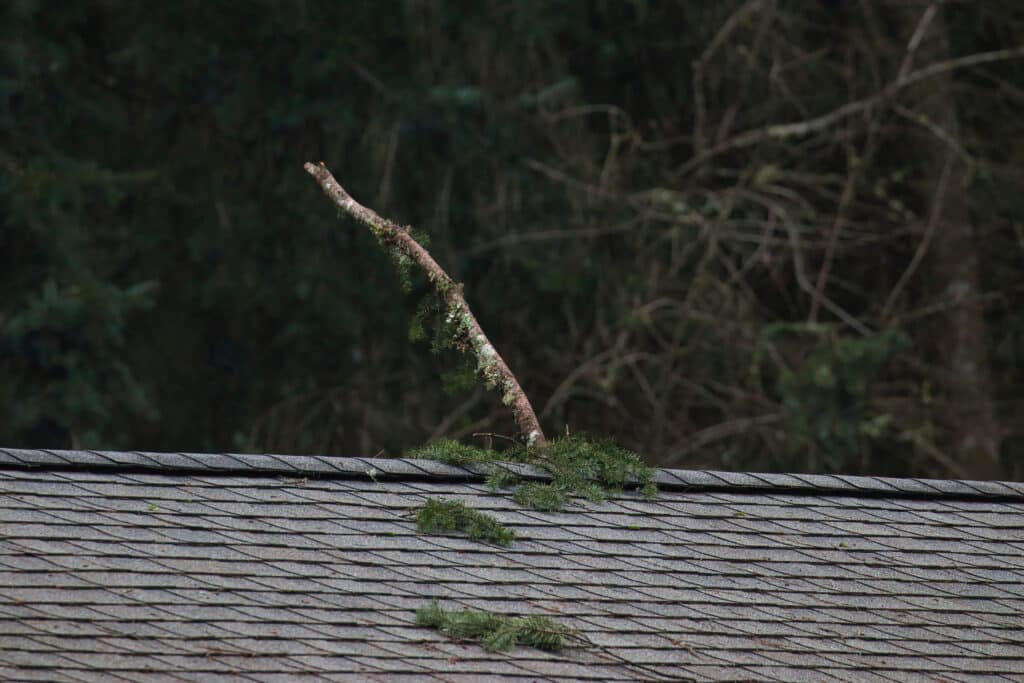9 Maintenance Tips to Extend the Life of Your Shingle Roof
Don’t wait until there’s damage to look at your shingle roof. Instead, be proactive and follow these recommended maintenance tips.

Don’t wait until there’s damage to look at your shingle roof. Instead, be proactive and follow these recommended maintenance tips.

As a homeowner, you remember to mow your lawn, change the air filters in your HVAC system, and clean your grill, but when’s the last time you looked at, or even thought about your roof?
While the roof isn’t the “foundation,” of the home, it still serves several critical functions that make it one of the most essential components of any building, including protecting interior spaces from the outside elements, maintaining the building’s overall structural integrity, and regulating temperatures to prevent heat loss in the winter and heat gain in the summer.
Performing maintenance on a regular basis ensures your roof continues to do just that, while also preventing early replacement and minimizing repair costs. Rather than taking out money from your savings account or applying for a home improvement loan, be proactive and follow these maintenance tips.
You spend most of the time inside your home, so it’s easy for your roof to become “out of sight, out of mind.” But, visual inspections are the one maintenance task that can make a significant difference. It’s also a maintenance task that homeowners often overlook.
You should aim to do visual inspections at least twice a year, once in the spring and in the fall, and any time after a storm.
High wind events tug and tear at shingles, sometimes causing them to come off the roof, and the impact of hail leaves divots and cracks.
When visually inspecting your roof:
We recommend scheduling a professional inspection after a storm, whether you notice damage or not, as some damage can’t be seen from the ground.

The primary purpose of your roof is to protect the people, contents, and integrity of the living space. Water infiltrations jeopardize all three because moisture causes lumber to rot and promotes mold behind walls, under floorboards, and in ceilings.
One of the best ways to determine if you require prompt roof maintenance and repairs is to check for leaks in the attic. Look for drips following heavy rain, moisture, and water marks. If you find any signs of a water leak, contact a professional. Putting off the need for maintenance only leads to further damage and more costly repairs.
The value of having a professional roof inspection conducted annually cannot be understated. People who work in the roofing industry possess a detailed understanding of how leaks occur. An inspector has the tools, technology, and equipment to identify issues and recommend solutions before they become significant problems.

If L&S Home Improvements installed your roof, this is a task you can skip, unless you see algae, lichen, or moss growing on your roof. The CertainTeed Landmark Pro shingles we use feature algae inhibitors that protect against this damage for up to 20 years.
However, if your existing roofing system doesn’t have this protection or you live in a wooded or shaded area, you may notice more bio-growth. Should you notice bio-growth, never use a pressure washer on it. Yes, you can use a pressure washer (on a low setting) to clean siding, but never on an asphalt shingle roof. High-pressure water can strip away the protective granules from the shingles, lift or crack them, and force water underneath, all of which will significantly shorten the lifespan of your entire roofing system.
Instead of pressure washing, we recommend seeking professional assistance. There are many companies out there that specialize in soft washing roofs. However, keep in mind that just one cleaning may not resolve your issues. If you notice continual bio-growth on your roof, it could indicate moisture retention due to poor drainage or inadequate ventilation, and should be inspected and addressed by a professional.
Your gutters are an extremely important part of your roofing system. When they become clogged or frozen, the result is costly damage to exterior walls, fascia, and soffits. Gutter issues often arise when leaves, debris, bird nests, and other items clog gutters, causing rainwater to pool and overflow, instead of being directed away from the building.
The only way to prevent that is to clean them in the spring and fall, and to address ice dams in the winter.
Additionally, even if you have gutter guards, this doesn’t exempt you from this type of maintenance. Your gutter guards do significantly help reduce blockages, but they still need to be cleaned. Mesh guards are most commonly installed, and those can get covered up easily with fine debris, ultimately resulting in water overflow and an increased risk of ice dams in the winter.
Don’t follow the saying “get your mind out of the gutter”—please think about your gutters from time to time!

Like heavy rains and high winds, tree limbs put roofs in harm’s way. Pine trees are the most likely type to impact your roof and gutters. These softwoods spew sticky sap during the spring and summer. And come autumn, pines shed needles that task homeowners with another round of roof maintenance and cleanup.
Soft timbers and those with weak limbs also pose a hard impact threat when wind gusts arrive. We strongly recommend trimming back overhanging branches and removing trees that could fall on your roof. It’s always better to be safe than sorry, and when a big branch destroys your roof, you’ll wish you had just taken care of it in the first place.
Proactive roof maintenance and repairs help property owners avoid unnecessary damage and the cost of an early replacement. If you suspect your shingles or other elements need timely repairs, schedule an inspection. Essentially, if anything seems off, have it checked.
The most common damage we see in roofs is water infiltration/damage caused by damaged pipe boots, which allows water to flow directly into the roofing system around plumbing vents. Another issue we repair often is a compromised valley, which makes it easier for water to damage the roof decking, insulation, and interior spaces. Any damage to a penetration point on a roof, like pipe boots, chimney flashing, and exhaust vents, should be addressed immediately.
Because these areas are so high-risk, during new roof installations, we ensure that a cap master is included on top of the stink pipe and use sealant to fill gaps around pipes, vents, chimneys, and other protrusions to provide advanced penetration sealing.
Other repairs you should address immediately include:

Ice dams are a nuisance for many homeowners during the winter. They’re often caused by ventilation issues when the soffits prevent cold outside air from entering the attic space. Without the continuous flow of cold air, the attic becomes warmer than it should be, which heats the roof deck from below (which should always stay relative to the outside temperature) and melts the snow on the upper roof areas. That melted snow then refreezes at the eaves, gradually building up along the roof edge and in gutters. Your roof isn’t designed to handle standing water—it’s meant to shed it quickly, so when ice dams prevent proper drainage, it can infiltrate your roof, causing leaks, structural damage, and interior water damage.
When addressing ice dams, you might think, “I could just hit it with a hammer really hard.” And while yes, you could do that, what you’re risking is cracking or puncturing shingles, damaging flashing, denting gutters, or creating holes in the roof surface that will leak once the ice melts. Even if you carefully chip at it, you can still cause micro-fractures. We’ve also seen homeowners use torches, propane heaters, or other flame sources, which can be even worse because they can ignite the roofing materials.
Instead of using hammers, chisels, or fire sources, use hot wires or steam machines, or even better, a professional.
While you do need to address pest damage sooner rather than later, we recommend consulting your roofing contractor first. Pest control companies, while they mean well, can damage your roofing system by:
If your roof is damaged by a pest control company, your roofing contractor will not fix the roof for free because the warranty is voided. That can be a tough conversation for your roofing contractor to have with you (and for you to experience), so be sure to prevent it in the first place by asking your roofing contractor to be there when your pest control company is servicing your roof.
We encourage homeowners to exercise extreme caution when conducting a visual inspection or considering DIY asphalt roof maintenance. Trying to save a few dollars doesn’t generally make good sense when you think about taking a hard fall from a height or inadvertently damaging the roof.
Here are some other tips to consider when it comes to maintaining your roof and ensuring longevity:
L&S Home Improvements is committed to keeping southeast Michigan homeowners (and their properties!) safe. If you have an issue, we’re here to help you resolve it. There’s no reason to put yourself in unnecessary danger or do DIY repairs that could result in more damage being done than prevented.
We’re a fully licensed and insured roofing contractor specializing in cost-effective roof repairs (for EPDM and asphalt shingle roofs only) and new asphalt shingle installations. When we install a new roof on your home, we provide complimentary annual inspections and necessary maintenance work to ensure you stay protected for years to come.
If you’ve noticed damage, or you’re not sure when your roof was last maintained or professionally inspected, contact us today to book our services.